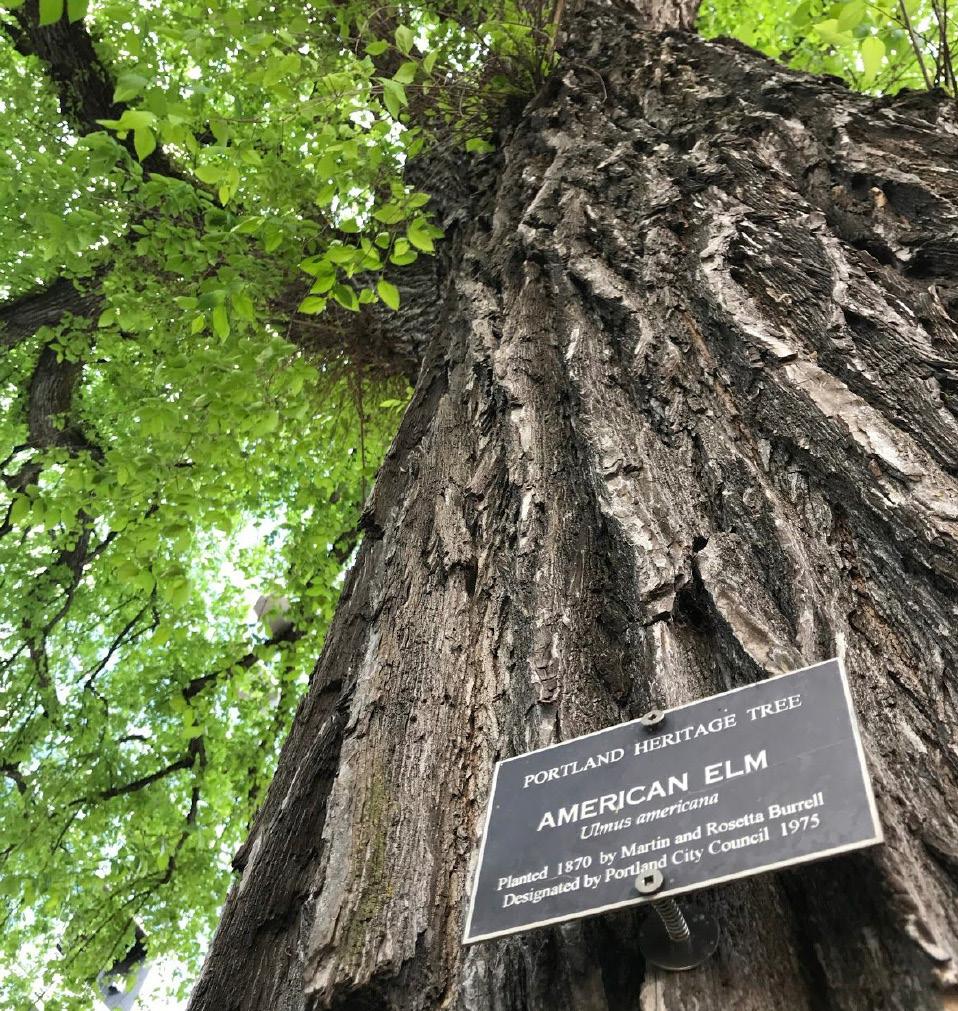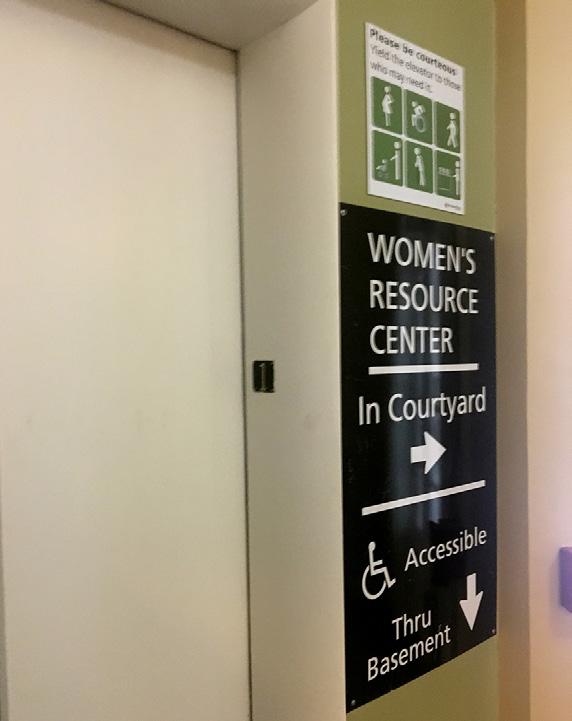
3 minute read
Portland's Heritage Trees
PSU's towering European Copper Beech is Heritage Tree #54. photo by Brooke Jones Portland's Heritage Trees
article by Zoë Sandvigen
Advertisement
Portland is known for being one of the greenest cities in America as one of the first places to ban plastic bags while using 20% more renewable energy than the national average. Portland’s air quality is also ranked in the top 25 for U.S. cities, and one the best for major metropolitan areas. Besides the abundance of appreciation for solar panels, recycling, efficient public transit, and a robust biking culture, Portland has another unique attribute making the city more green than anything—the trees.
Portland Parks & Recreation Urban Forestry manages the city’s foliage. To be more specific, this organizations looks after and cares for 210,000 street trees, 1.2 million park trees, and over 300 heritage trees. Portland’s Heritage Tree Program recognizes the cities most beautiful trees based on historical significance, age, and size. To be a tree in this program means to be protected by city code and invincible to removal without approval of the Urban Forestry Commission. Any tree, given the property owner’s consent, could be nominated to become a Heritage Tree; Portland City Council accepts nominated trees if they are significantly old, large, or unique, say, with particular horticultural interest or a rich history.
A great way to see a list of Portland’s Heritage Trees is through the website’s interactive map. The map includes basic information about these special trees, such as their species and date of induction. Heritage Tree #54, for example, is the European Copper Beech at the center of PSU’s Millar Library. The tree will be 129 years old this June. (The library, on the other hand, is 50 years old.)
Before the Heritage Tree ordinance was enacted in Portland on May 19th, 1993—just over 25 years ago, there were a limited number of historically marked trees. In 1973, the Oregon Historical Society proposed the ability to designate trees as historic entities in addition to buildings.
The first tree they designated as a historic landmark is a 150-year old American Elm that still stands today. The “Burrell Elm” was planted in 1870 by Rosetta Burrell in her private garden in the midst of what used to be a family neighborhood. The Burrell estate was featured in Westshore Magazine

in 1888, back when the Burrell Elm was at the height of its teenage years.
Over time, Rosetta Burrell and her Elm have come to mean more than just a beautiful garden. Burrell herself was a social activist, a member of the First Unitarian Church and on the League of Women Voters, and also served on the Portland Women’s Union. She donated $10,000 to the Martha Washington Hotel, a boarding house for single mothers.
Today, the Burrell Elm is the last standing member of the Burrell Estate and garden. It lives downtown. At 78 feet tall, with a trunk circumference of just over 12 feet, It flanks the Portland Art Museum, proudly looming over the YWCA on a bustling downtown street just a few blocks north of PSU. Since it was planted in 1870, the tree has witnessed and withstood the robust transformation of downtown Portland. The Burrell Elm is one aging resident protected by the City of Portland, its roots firmly planted in a city ever developing.

Photos of the American Elm known as the Burrell Elm, Portland's first tree to be designated as a Historic Landmark. (opposite page) plaque commemorating and marking the Burrell Elm. photo by Zoë Sandvigen. (top left) Light strikes the corner of the YWCA, a fitting organization given Rosetta Burrell's committment to women's advocacy. photo by Zoë Sandvigen. (top right) A different view to really get a sense of the Burrell Elm's shape. photo by M. Saqif Maqsud. (bottom right) Rosetta Burrell tending to her fresh Elm, not knowing that students 150 years in the future would be writing about her, and her new addition to the garden. illustration by Jon Bordas












